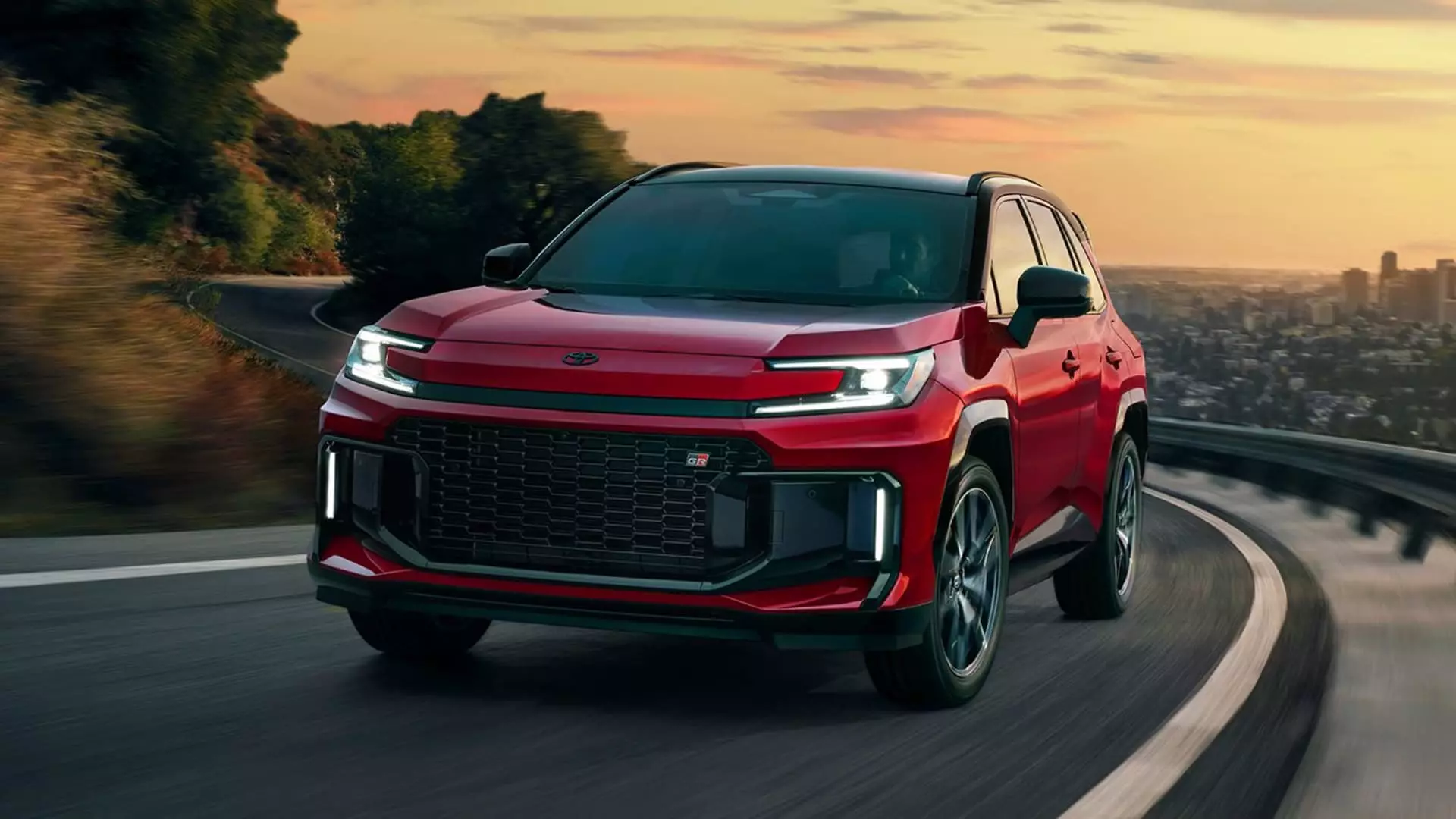In an automotive landscape increasingly dominated by electrification, Toyota’s announcement that the 2026 RAV4 will exclusively feature hybrid and plug-in hybrid models signals a significant pivot in consumer preference and corporate strategy. Since its debut in the U.S. in 1996, the RAV4 has established itself not only as the leading SUV in sales but as a phenomenon that resonates with the American public. Following a record sales year of nearly 475,200 units in 2024—a 9.3% increase—it’s clear that the RAV4 has cultivated a loyal following. Yet, adapting to the changing demands of the market is essential for maintaining this momentum, and hybridization appears not just as an option, but as an affirmative response to consumer preferences.
Hybrid Technology as a Competitive Edge
Toyota’s decision to transition the RAV4 lineup to hybrids exclusively hinges on consumer demand—an astute acknowledgment that hybrids are not merely a transition phase, but instead are here to stay. The brand leads the hybrid segment, with nearly half of last year’s RAV4 sales—a staggering 44%—being hybrid vehicles. As the industry experiences a slower-than-expected shift to all-electric models, focusing on hybrids allows Toyota to merge the benefits of traditional combustion engines, like performance and refueling speed, with the environmental advantages of electric power.
Moreover, by eliminating the traditional gas engine, Toyota is not merely responding to an eco-conscious market but proactively determining the future of mobility. While critics may argue this is a reactive measure to regulatory pressures, to me, it is clear that Toyota is leveraging this hybrid technology as a competitive edge, setting itself apart in a market that’s full of uncertainty.
The Unwavering Demand for Eco-Friendly Options
The growing popularity of the RAV4 hybrid is a testament to a larger trend: Americans are increasingly valuing vehicles that champion fuel efficiency without sacrificing performance. The hybrid variant’s quicker turnover and heightened demand underscore a marketplace that is ready for sustainable options. David Christ, Toyota’s North American Brand Head, recently emphasized this shift, indicating that consumers are voting with their wallets in favor of hybrids and plug-ins.
This trend towards eco-friendly vehicles has implications beyond just sales figures. It reflects a cultural shift where sustainability is becoming paramount for consumers. The numbers speak volumes—electrified vehicles accounted for a record 20% of total new car sales in the U.S. in the past year, with hybrids leading the charge. With such strong consumer backing, it becomes evident that hybrids are an integral part of the automotive equation, particularly for manufacturers like Toyota that have committed themselves for decades to hybrids.
Facing Challenges While Building Opportunities
However, the road ahead is fraught with challenges, particularly in light of the ongoing tariffs on imported vehicles and parts, largely stemming from trade tensions. Toyota’s production strategy needs to adapt to mitigate these tariffs while maintaining its robust sales figures. The revelation that roughly 84.3% of RAV4 sales come from plants located outside the U.S. raises red flags about supply chain resilience. As competition intensifies in the hybrid and all-electric vehicle tech markets, maintaining a streamlined production process will become increasingly crucial.
Despite these challenges, there exists optimism that Toyota can maximize production at its Kentucky plant without sacrificing quality. Mark Templin’s assertion that they anticipate building more RAV4s domestically is both strategic and necessary. This proactive approach not only aids compliance with tariffs but also could enhance the perception of the RAV4 as an American-made vehicle, fostering deeper consumer loyalty.
Reimagining the Future of the Automotive Industry
The forthcoming RAV4 redesign is more than just aesthetic changes; it’s a comprehensive rethinking of what a modern SUV should represent. Shifting exclusively to hybrid models reflects an industry-wide transformation influenced by environmental consciousness and regulatory frameworks. Toyota’s long-term commitment to hybrids is indicative of a paradigm shift—one where preconceived notions of power, efficiency, and style are being radically reshaped to meet today’s standards.
This evolution pushes other automakers to respond in kind, sparking a proverbial arms race in hybrid technology. As electrified sales proliferate, the potential for Toyota and others to innovate further is boundless. The imminent RAV4 hybrid represents a cornerstone vehicle that aligns perfectly with market trends focused on sustainability, efficiency, and consumer engagement.
In shaping a future where hybrid technology takes center stage, Toyota is not merely keeping pace; they are setting the standard for what modern vehicles can and should be.

